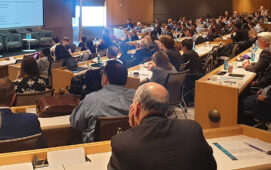Delivering the opening keynote for last week’s Low-Latency Summit in NYC, David Kelly, Thomson Reuters’ CTO for Enterprise Solutions, put the audience response system to good use, polling the standing room only crowd on a number of key questions … covering technology drivers and focuses, and also on buy versus build, where the result was a surprise!
And the results were …
Question 1: What is your current primary driver for technology decision making for you or your customers?
Responses: Cost – 18%, Systems performance – 17%, Data/Trading Volumes – 19%, Regulation – 21%, Liquidity Seeking – 24%.
The responses underlined the wide range of factors that firms are grappling with. Cost and performance are perhaps givens, as is coping with volumes, but staying compliant with regulations, and leveraging fragmented marketplaces for trading advantage were the most significant drivers. Bottom line: There’s always something new to worry about!
Question 2: In terms of high velocity, low latency trading, what is your primary technology focus?
Responses: Market Data/Latency – 20%, Execution Latency – 23%, Trading Engine Proximity – 23%, Regulation – 15%, N/A – 19%.
The responses demonstrated the keen interest in high frequency trading strategies among delegates, and taking execution latency and trading engine proximity together, the emphasis on trading speed is still a driver for technology spend. Bottom line: For this audience it is still faster, faster, faster!
Question 3: To what extent have you or your customers embraced ‘buy’ versus ‘build’?
Responses: No change over past 3 years – 19%, Trending towards buy – 25%, Trending towards build – 27%, No change – 29%.
The responses were a bit of a surprise for Kelly, who sees the world moving more towards a buy versus build model. But for this audience, with probably a focus on the lowest latency, the norm is DIY, perhaps making use of certain components – e.g. data feeds, messaging – but integrating them with a lot of home-grown applications. Bottom line: Thomson Reuters got some great market research!
Subscribe to our newsletter




